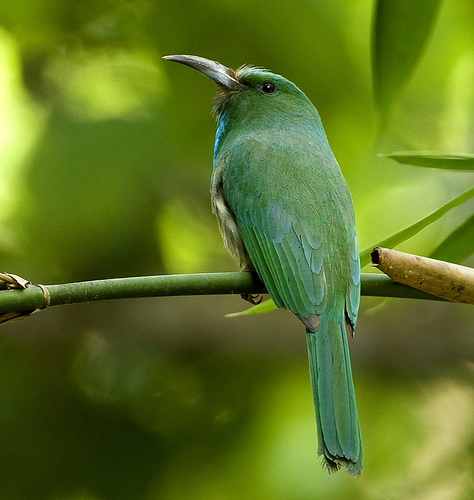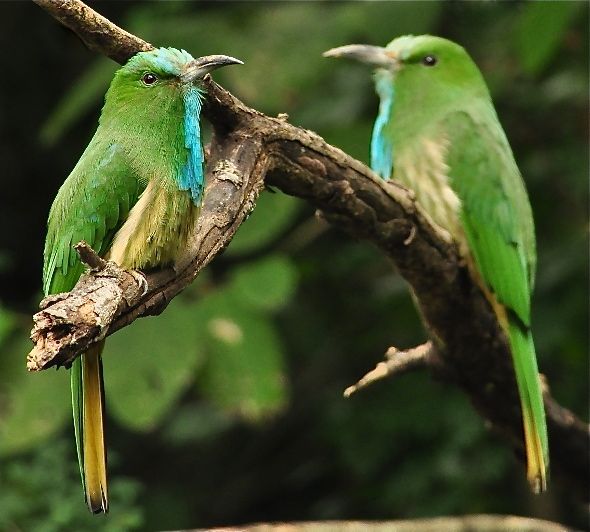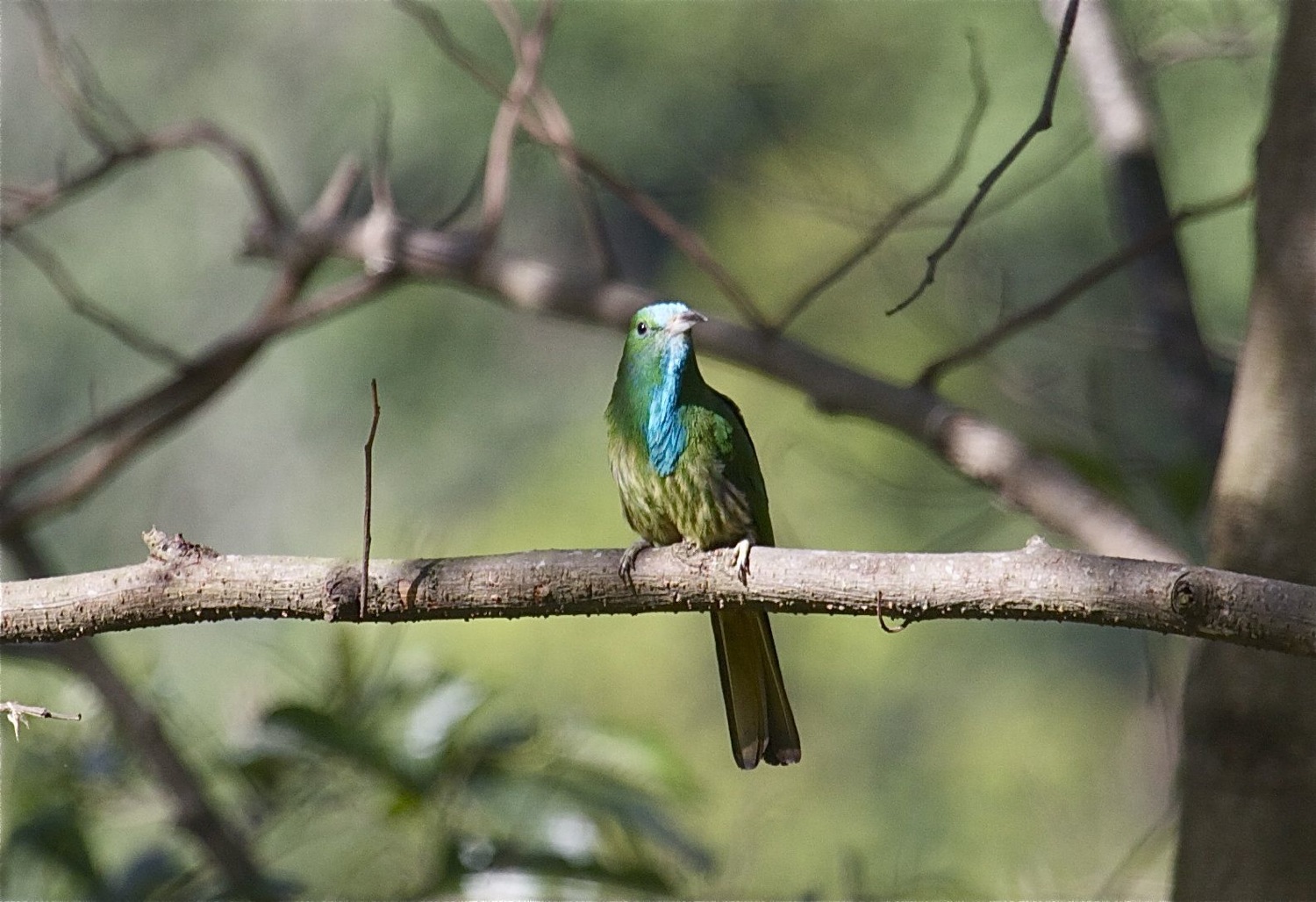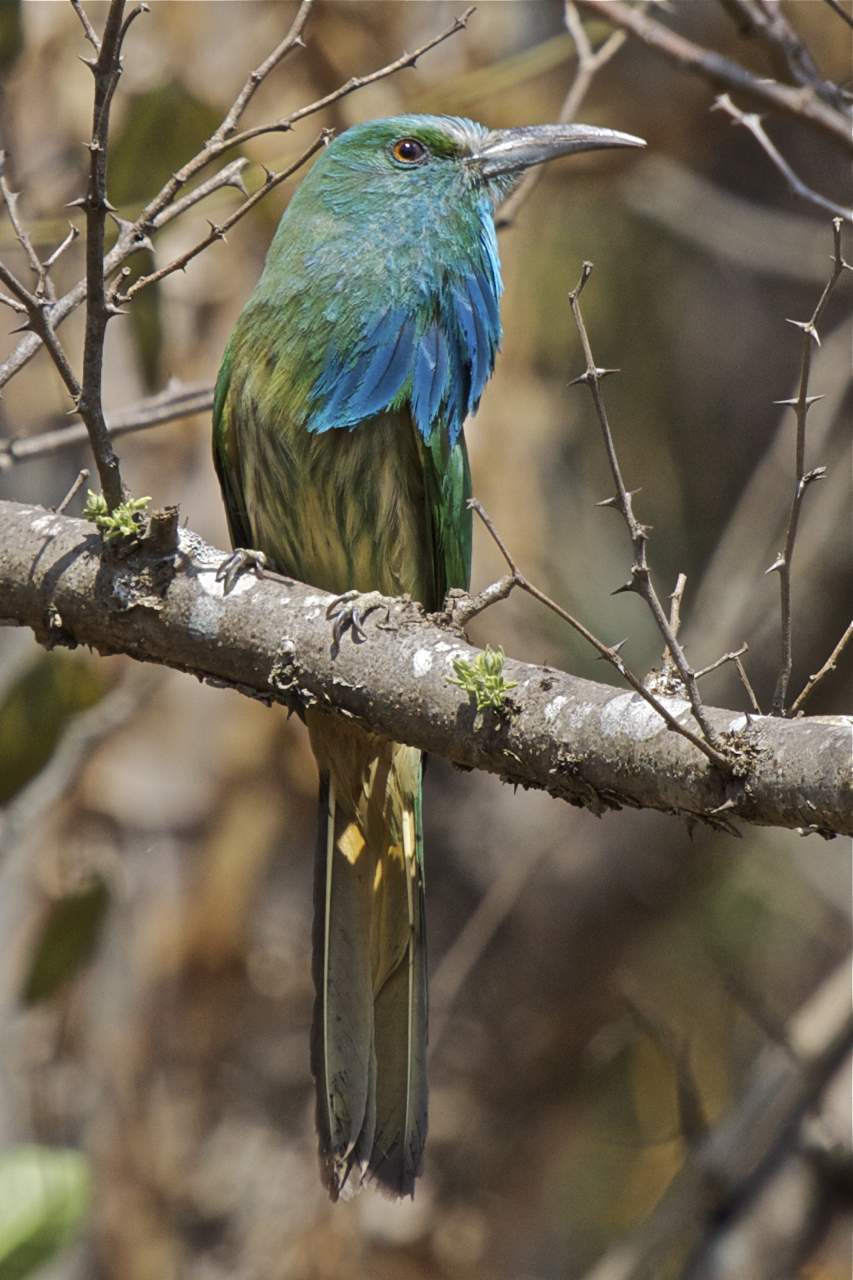
Nyctyornis athertoni
TAXONOMY
Merops athertoni Jardine and Selby, 1830, India. Two subspecies.
OTHER COMMON NAMES
French: Guкpier а barbe bleue; German: Blaubartspint; Spanish:
Abejaruco Barbiazul.
PHYSICAL CHARACTERISTICS
12.5–13.5 in (31–34 cm); 2.5–3.3 oz (70–93 g). The largest
bee-eater and, along with its congener, clearly differentiated
from the other genera by a stouter bill and a lax beard of
feathers running from the base of the bill to the lower breast.
Upperparts mainly green; belly is buff with broad green
streaks. Forehead is pale azure-blue; long, broad throat feathers
are dark blue grading to azure on the tips.
DISTRIBUTION
India to Indochina, but absent from the Malay Peninsula.
HABITAT
Clearings and more open areas of deep forest, occurring at elevations
up to 7,150 ft (2,200 m), where it inhabits moss and
deciduous forests.
BEHAVIOR
Birds spend most of their time in pairs, perched at the top of
or at the outer side of trees, in search of food.
FEEDING ECOLOGY AND DIET
Relatively little is known, but honeybees, wasps, large beetles,
and dragonflies are commonly taken. The blue beard may act
as a flower mimic, attracting honeybees close enough to be
snapped up by birds without moving from the perch.
REPRODUCTIVE BIOLOGY
Solitary nester, digging nesting burrows up to 9.75 ft (3 m) into
stream or road banks. In India and Nepal, there are two breeding
periods, February to May and August to October. In Indochina,
egg laying is most common in April to May, but breeding may
occur anytime until October. Clutch size is six eggs.
CONSERVATION STATUS
Not threatened.
SIGNIFICANCE TO HUMANS
None known.
Other popular Animals
Photo Gallery of - Blue-bearded bee-eater




 Animalia Life
Animalia Life